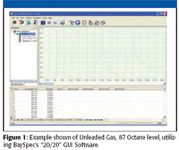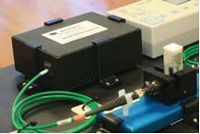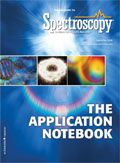Miniature NIR: Improved Accuracy, Cost Savings
With gas and diesel fuel prices rising, there is an increasing need to monitor online quality control and blending mixtures. The benefits include improved accuracy in blending mixtures, solid state reliability, lifetime calibration and fraud avoidance.
With gas and diesel fuel prices rising, there is an increasing need to monitor online quality control and blending mixtures. The benefits include improved accuracy in blending mixtures, solid state reliability, lifetime calibration and fraud avoidance.

Figure 1
BaySpec is now delivering a compact, robust, affordable NIR Spectrometer engine ideal for OEM integration into fuel analyzer applications. The SuperGamut™ features excellent wavelength accuracy and repeatability at a low cost of ownership.
BaySpec's SuperGamut™ Series NIR Spectral Engines solve today's challenges through the application of proprietary Volume Phase Grating (VPG™) technology offering for the first time instrumentation manufacturers the features they need:
- Excellent spectral resolution and measurement accuracy
- Fast data acquisition speed
- Compact, handheld size saving space and weight
- High reliability through hermetically-sealed, no moving parts designs
- Ultra-low power consumption for portability and enhanced reliability
- Volume production experience for lot-lot consistency and lower cost
- Lifetime calibration
The SuperGamut™ Series was born out the telecommunication markets' "boom and bust", which produced an array of components and technologies, such as, revolutionary Volume Phase Gratings (VPG®), high speed electronic chips, reliable low cost light source and high speed NIR photo-detectors. Collectively, they enable the dream of a low-cost, yet highly accurate spectral device. Out of the ashes comes new growth.

SuperGamut™ Series instruments yield high spectral resolution and high optical throughputs under harsh environmental conditions over a broad NIR 800–2500 nm range at attractive total costs of ownership. Both reflectance and transmission modes of spectroscopic measurements and process applications are supported.
Customers in NIR spectroscopy and biomedical industries are now benefiting and building systems to meet the world's current optical system challenges.

BaySpec, Inc.
101 Hammond Avenue
Fremont, CA 94539
Tel. (510) 661-2008, Fax (510) 661-2009

Thermo Fisher Scientists Highlight the Latest Advances in Process Monitoring with Raman Spectroscopy
April 1st 2025In this exclusive Spectroscopy interview, John Richmond and Tom Dearing of Thermo Fisher Scientific discuss the company’s Raman technology and the latest trends for process monitoring across various applications.
A Seamless Trace Elemental Analysis Prescription for Quality Pharmaceuticals
March 31st 2025Quality assurance and quality control (QA/QC) are essential in pharmaceutical manufacturing to ensure compliance with standards like United States Pharmacopoeia <232> and ICH Q3D, as well as FDA regulations. Reliable and user-friendly testing solutions help QA/QC labs deliver precise trace elemental analyses while meeting throughput demands and data security requirements.